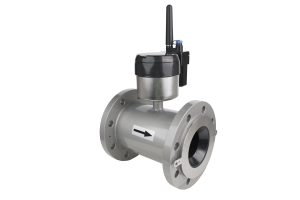When choosing an electromagnetic flow meter (EMF), several important factors must be considered to ensure accurate measurements and long-term reliability:
- Medium Requirements
The fluid must be conductive (typically ≥5 μS/cm), such as:
- Water (tap water, sewage, seawater)
- Acid and alkaline solutions (chemical industry)
- Slurry, pulp, and mineral slurry (solid-liquid mixtures that are conductive)
It is unsuitable for non-conductive fluids, like:
-
- Purified water, distilled water
- Oils (petroleum, gasoline, diesel)
- Certain organic solvents (e.g., alcohol, benzene)
- Pipe Diameter and Flow Rate
Choose a flow meter that matches the appropriate flow range. Generally, a flow velocity of 1–5 m/s is recommended. Too low a flow velocity might affect measurement accuracy, while too high can increase pressure loss.
The pipe diameter should match the flow meter’s size. If the flow velocity is too low, choose a smaller diameter to improve measurement stability. - Electrode and Lining Material Selection
The materials for the electrodes and lining should be selected based on the corrosiveness, temperature, and wear conditions of the fluid:Material Suitable Medium Electrode Materials 316L Stainless Steel Sewage, neutral liquids Tantalum (Ta) Strong acids (e.g., nitric acid, sulfuric acid) Platinum (Pt) Highly corrosive, high-temperature liquids Titanium (Ti) Seawater, chloride-containing liquids Lining Materials Rubber General water, sewage, slurry PTFE (Teflon) Strong acids, strong alkalis Neoprene Liquids with particles, mineral slurries - Installation Conditions
- Straight Pipe Length: The recommended length before the flow meter is ≥5 times the pipe diameter and ≥2 times after the meter to avoid disturbed flow conditions.
- Full Pipe Flow: The flow meter should be installed in a fully filled pipeline section to prevent air bubbles and empty pipes from affecting measurement accuracy.
- Environmental Factors: Avoid strong electromagnetic interference from sources like variable frequency drives or motors; proper grounding is essential.
- Output Signal and Communication Protocol
- Analog Signals: 4-20mA (common industrial signal)
- Digital Communication: RS485 (Modbus), HART, Profibus
- Pulse Output: Suitable for metering applications
- Power Supply
- AC 220V/110V (for fixed installations)
- DC 24V (for industrial automation systems)
- Battery-powered (for remote locations without external power)
- Other Special Requirements
- Bidirectional Measurement: If reverse flow measurement is needed, choose a model that supports bidirectional measurement.
- Protection Rating: IP65 (general environments), IP67/IP68 (outdoor or submerged environments).
- Explosion-proof Requirements: For use in petrochemical or hazardous areas, an explosion-proof flow meter should be selected.
Considering these factors will help you choose the right electromagnetic flow meter for your application.

Post time: Feb-09-2025

